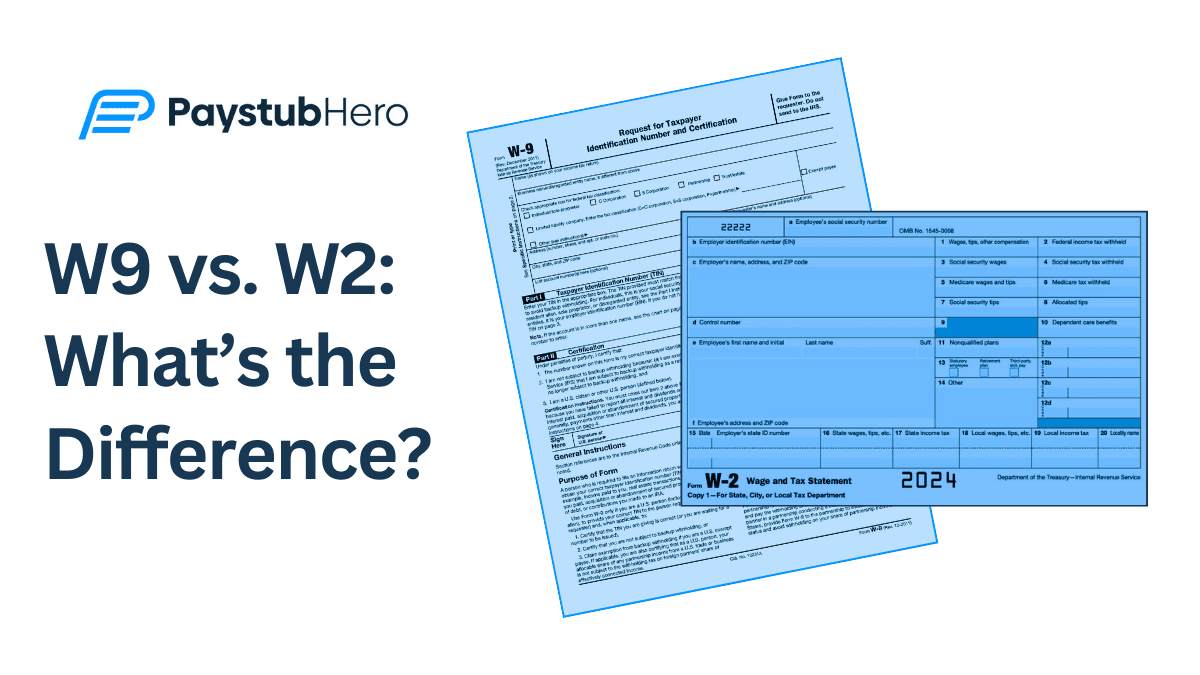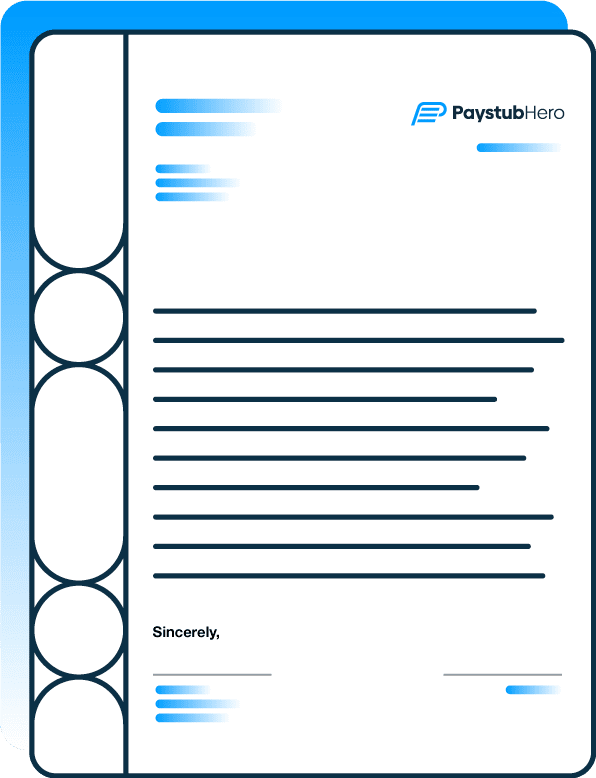W-2s and W-9s are both tax forms, but they’re used for different things.
If you’re an employee, you’ll get a W-2 from your boss at the end of the year. It shows how much money you made and how much was taken out for taxes.
But if you’re a freelancer or independent contractor, you’ll need a W-9. This is a form you give to the people or companies who pay you. It just has your basic tax info on it so they can tell the IRS how much they paid you.
Want to learn more? Keep reading!
What is a W-2?
A W-2 is a document provided by your employer that summarizes your earnings and the taxes that were withheld from your paycheck over the course of the year.
It’s officially called the “Wage and Tax Statement” and is a key document you’ll need when filing your annual income tax return.
Here’s a quick breakdown of what you’ll typically find on a W-2:
⦿ Your Personal Info: Your name, address, and Social Security number are listed here.
⦿ Employer Info: This includes your employer’s name, address, and their Employer Identification Number (EIN).
⦿ Earnings: It shows everything you earned—wages, tips, bonuses, and other compensation—for the year.
⦿ Federal Tax Withheld: This tells you how much federal income tax was taken out of your paycheck.
⦿ Social Security & Medicare Taxes: You’ll see separate amounts for what was withheld for both Social Security and Medicare.
⦿ State and Local Taxes: If your state or city collects income tax, this section shows what was withheld.
Who receives a W-2?
Your employer must send you your W-2 by January 31st of the following year, giving you time to gather the information needed to file your taxes (usually due by April 15th). You’ll get several copies: one for your records, one for your federal tax return (if you’re filing a paper return), and copies for state or local returns, if needed.
The information on your W-2 is important when it comes to filing your taxes.
You’ll use these details to figure out if you owe the government money or if you’re due a refund. It’s important to keep your W-2 in a safe spot, as you might need it for things like applying for loans or other financial services.
If you don’t get your W-2 by the end of January, contact your employer to find out what’s going on.
What is a W-9?
Okay, so we’ve covered the W-2, which you receive from your employer. Now, let’s talk about the W-9, which is something you fill out and give to someone else.
Look at it this way:
If you’re working as a freelancer, contractor, or just not a regular employee, you’ll probably be asked to fill out a W-9 form. It’s officially called the “Request for Taxpayer Identification Number (TIN) and Certification.”
I know, it sounds a bit formal, but it’s really just a way for the person or company paying you to collect your tax info. Nothing too complicated.
Here’s what a W-9 is all about:
⦿ Your basic info (again):
It asks for your name, business name (if you have one), address, and most importantly, your Taxpayer Identification Number (TIN). For most individuals, this is your Social Security number (SSN).
If you’re a business, it might be your Employer Identification Number (EIN).
⦿ Certification:
You’re basically confirming that the information you’re providing is accurate and that you’re not subject to backup withholding (which is a whole other tax thing that usually doesn’t apply to most people).
Key Differences Between W-9 and W-2
We can now break down the key differences between W-9 and W-2
1. Employee vs. Contractor: Who Are You?
The major difference between W-9 and W-2 is the type of work relationship you have.
➡ A W-2 form is all about employees as we have seen above.
If you’re working for a company where they control what you do, how you do it, and when you do it, you’re likely considered an employee. As an employee, your employer is responsible for withholding taxes like federal income tax, Social Security, and Medicare.
You might not even think about taxes until you get your W-2 at the end of the year.
➡ A W-9, on the other hand, is for independent contractors or freelancers.
If you work on projects for different companies, set your own schedule, and decide how to get the job done, you’re probably a contractor. No one’s deducting taxes from your paycheck. You’ll handle those yourself.
Instead of a W-2, you’ll provide a W-9 form to your clients, which they use to report how much they’ve paid you.
So, the big question is: Are you an employee under someone’s control or a contractor working independently?
That’s the first clue to knowing whether you need a W-2 or a W-9.
2. Taxes: Who Handles Them?
Let’s talk taxes.
For employees with a W-2, your employer handles the heavy lifting. Every time you get paid, they’ve already taken out taxes for federal and state income, Social Security, and Medicare.
It’s all automated. At the end of the year, your W-2 summarizes everything: how much you earned, how much tax was withheld, and what you need to report when filing your taxes.
For contractors with a W-9, it’s a completely different story.
No one’s deducting anything from your paycheck. You’re paid in full, and it’s your responsibility to set aside money for taxes. This means you’ll not only pay income taxes but also the self-employment tax (which includes both the employee and employer portions of Social Security and Medicare).
So, with a W-2, taxes are done for you. With a W-9, taxes are entirely up to you.
3. Reporting Income: Who’s Doing the Paperwork?
When it comes to reporting your earnings, W-2 and W-9 forms lead to different tax documents.
➡ For employees, your employer sends your W-2 to both you and the IRS.
It’s a neat package that lets the government know how much you earned and how much tax was withheld. All you have to do is plug those numbers into your tax return.
➡ For contractors, it works differently.
You give your W-9 to the client, and at the end of the year, they’ll issue you a 1099-NEC form if they paid you $600 or more. This form shows how much you were paid during the year but doesn’t include any tax withholding since that’s your job.
4. Benefits and Protections
Another big difference is the benefits—or whether there are any at all—that come with each form.
⦿ W-2 employees often get benefits like health insurance, paid time off, and retirement plans. They’re also covered by labor protections, including minimum wage laws and unemployment insurance.
⦿ W-9 contractors, however, don’t usually receive benefits from the companies they work for. You’re considered self-employed, so you’re responsible for things like health insurance, retirement savings, and any safety nets.
This is an important distinction to keep in mind when deciding whether to take on a contractor or employee role.
5. Payment and Flexibility
How you’re paid also highlights a big difference between W-9 and W-2.
⦿ W-2 employees receive regular paychecks with taxes already taken out.
Your income is steady, and you don’t have to worry about chasing down payments.
⦿ W-9 contractors, on the other hand, are often paid per project or on a freelance basis.
You send invoices to your clients, and payment terms can vary. While this gives you more flexibility, it also means managing your cash flow carefully since payments may not always be consistent.
6. Who Uses These Forms?
Finally, let’s clarify who’s actually using these forms.
⦿ W-2s are issued by employers to their employees.
It’s a formal relationship with clear guidelines and obligations.
⦿ W-9s are requested by businesses from independent contractors.
It’s a more flexible, project-based relationship where the contractor is treated as a separate entity rather than part of the company.
Where Do You Get These Forms?
Getting these forms is simple! For W-2s, PaystubHero makes it super easy to access them whenever needed.
As for W-9s, you can download the form directly from the IRS website. It’s a quick and straightforward process, so you’ll have it ready in no time!




